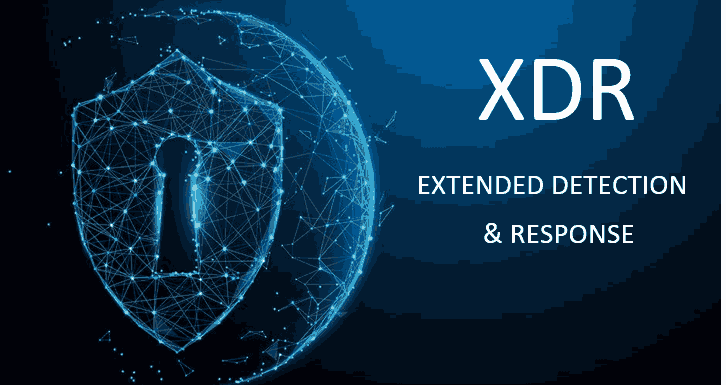XDR solves this problem by centralizing data and leveraging automation for more effective threat detection. The end product is a robust solution that fulfills its promise to assist you in promptly and effectively defending your network, local, and cloud environments against various threats. Security personnel may overlook severe risks due to the numerous dashboards and warnings they must handle.
Definition
What is XDR security? XDR security is an integrated solution that enables MSPs to identify threats faster, respond to them quicker, and reduce the risk of future attacks. The XDR platform centralizes historical and real-time data from multiple security layers (email, endpoints, servers, cloud workloads, and networks). It automatically correlates detection to provide contextual insight into an attack.
Stealthy threats often evade detection, hiding from disconnected security solutions within the sea of alerts. Overworked security teams need help with alert fatigue and a lack of visibility, resulting in poor productivity and a high cost of security operations.
To reduce the occurrence of these costly incidents, XDR offers a variety of advanced capabilities that accelerate identification and response to threats, such as forensic analytics, a unified alerting interface, and automatic correlation to prioritize threats. XDR also helps security analysts improve their productivity with a single point of visibility into a consolidated list of findings, helping them focus on the most critical threat events and eliminate false positives.
Unlike conventional SIEM and EDR solutions, which necessitate hefty upfront costs for gear, software licenses, and knowledgeable personnel, XDR can be a managed service, lowering operating expenses and easing the strain on IT resources. Additionally, a well-designed XDR platform can integrate with third-party tools without requiring vendor lock-in. This flexibility provides greater agility and lower total cost of ownership for MSPs.
Benefits
A robust XDR solution would enable MSPs to strengthen their security posture by shortening the time needed to identify and address attacks. It is accomplished by centralizing data from various sources into a single unified platform. Then, it uses advanced artificial intelligence to perform deep visibility and threat detection. It also connects the dots from multiple attack vectors, including endpoints, networks, and cloud workloads.
The centralized platform reduces the number of alerts that cybersecurity teams must analyze and prioritize, which can help eliminate the problem of alert fatigue and prevent them from overlooking essential threats. Moreover, it can improve the productivity of technical resources by eliminating manual tasks that could be better done by a human and freeing them up to focus on other projects.
XDR solutions also offer protection against a wide range of threats, such as insider abuse, ransomware, fileless attacks, and advanced zero-day malware. In addition, they can help to quickly isolate and mitigate any breaches that occur, which minimizes downtime and prevents compromised systems from spreading to other parts of the network.
Although XDR solutions can be more expensive than EDR or MDR, they can save MSPs money in the long run by increasing the efficiency of their security operations. XDR platforms also have the advantage of providing continuous improvement over time, which means that they will automatically learn and adapt to new types of threats as they become more common.
Deployment options
An XDR solution protects against threats at all levels, from endpoints and servers to networks, clouds, and virtual workloads. It provides a unified incident view and root cause analysis to accelerate threat detection and response. Its powerful automation can shut down or isolate malicious code before it spreads. It also reduces the threat footprint by identifying and removing unauthorized devices from the network.
The ability to identify rogue devices is vital for MSPs. It can be challenging to detect new devices on a network and prevent them from accessing sensitive data or uploading malware. An XDR solution can perform a deep scan of the network to identify unauthorized devices and allow administrators to remove them from the system. This process can be automated using a script on the cloud platform.
Security teams are overwhelmed with alerts from multiple security tools and often need more resources to analyze them. An XDR solution can tie together a series of lower-confidence events into one higher-confidence event and surface fewer, more prioritized alerts for investigation.
An XDR solution can help MSPs detect and respond to advanced threats like ransomware, fileless attacks, and memory-only attacks. It can also see indicators of compromise, reducing the time to remediate and limiting the damage from an attack. It can help identify vulnerable points such as unmanaged or Internet-of-Things (IoT) devices and filter events based on criteria such as known malicious activity or MITRE ATT&CK threat models.
Pricing
While there is considerable enthusiasm for XDR, MSPS must look beyond industry hype and understand the potential benefits and impact on their business. By delivering on the promise of better visibility, detection and response capabilities, and improved productivity for operational security teams, XDR is an attractive option for MSPs looking to safeguard their clients from today’s most serious threats.
XDR technology combines data from siloed security tools to centralize and correlate threat activity across endpoints, servers, cloud workloads, email, networks, virtual environments, and more in one unified solution. It enables MSPs to see the big picture and thwart advanced threats that would otherwise fly under the radar with siloed point solutions.
As a single platform consolidating events and alerts, XDR reduces tool sprawl, a significant hurdle for overextended security teams needing help to keep pace with the volume of notifications from multiple tools. This approach also provides greater context to help analysts prioritize and investigate attacks based on severity, speeding up the time to resolution.
By prioritizing and analyzing threats as they occur, XDR also allows security analysts to track the attack chain in real-time to identify attacker behavior, such as lateral movement within the network, and identifying vulnerable assets. It helps MSPs take swift action, limit damage to their customers’ systems and data, and minimize costly downtime due to a breach.

